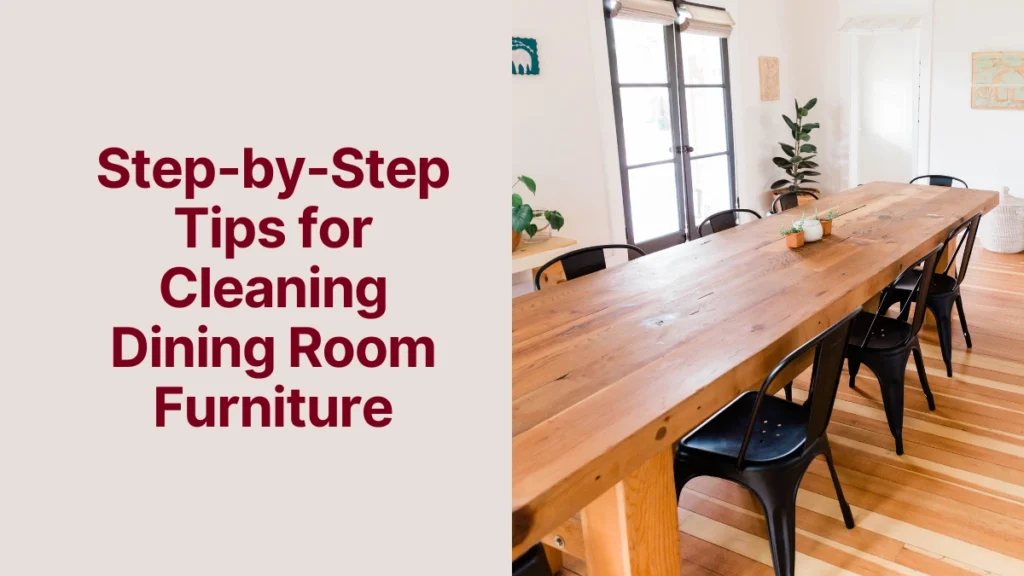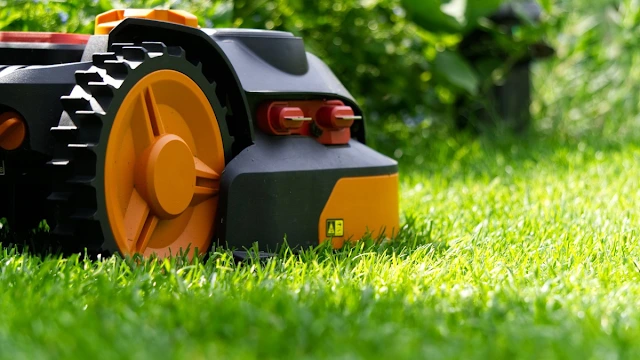
Your dining room is more than just a place to eat. It’s where family and friends gather for meals and make memories. Keeping your dining room furniture clean not only enhances the look of your home but also extends the life of the furniture. From wooden tables to upholstered chairs, each piece requires specific care to maintain its beauty and functionality. In this article, we’ll take a detailed look at how to clean various types of dining room furniture, so you can keep your dining area looking fresh and inviting.
Understanding Your Dining Room Furniture
Types of Dining Room Furniture Materials
Different materials require different cleaning methods. Understanding the material of your dining room furniture is the first step to proper cleaning.
Wood
Wooden dining tables and chairs add warmth and elegance to your space. However, they can be susceptible to scratches, water damage, and stains.
Glass
Glass dining tables are sleek and modern but show fingerprints and smudges easily. They need regular attention to keep them sparkling.
Upholstery
Upholstered chairs offer comfort and style, but they can also be a magnet for dust, dirt, and spills.
Metal
Metal dining furniture is durable and easy to clean, but it can be prone to rust if not cared for properly.
Identifying the Right Cleaning Method for Each Material
Once you know what material you’re dealing with, it’s important to choose the right cleaning method. Using the wrong product can cause damage, so always test a small area first.
Essential Cleaning Supplies
Basic Cleaning Tools
Having the right tools on hand can make the cleaning process easier and more effective.
| Items | Description |
| Soft Cloths | Use these for dusting and wiping surfaces. |
| Microfiber Towels | Perfect for cleaning glass and polished surfaces. |
| Soft-Bristled Brush | Useful for cleaning intricate woodwork and upholstery. |
Cleaning Solutions
Choose cleaning solutions that are suitable for the specific material of your furniture.
| Items | Description |
| Mild Detergents | Good for general cleaning of most surfaces. |
| White Vinegar | An excellent natural cleaner for removing grime and disinfecting surfaces. |
| Baking Soda | Useful for tackling stubborn stains on various materials. |
How to Clean Wood Dining Room Furniture
Dust your wood furniture regularly using a soft cloth to prevent build-up. For deeper cleaning, use a mild detergent mixed with water. Avoid soaking the wood; instead, use a damp cloth and wipe dry immediately.
Spills should be wiped up immediately to avoid staining. For stubborn stains, a mixture of baking soda and water can help lift them. Apply it gently with a soft cloth and wipe clean.Polish wood furniture once a month using a product suitable for the type of wood. This helps to maintain its shine and adds a layer of protection against spills and scratches.
Cleaning Glass Dining Room Furniture
Start by dusting the glass with a microfiber towel. Use a glass cleaner or a mixture of vinegar and water for cleaning. Wipe with a dry cloth for a streak-free finish.For tough stains, apply a bit of baking soda on a damp cloth and rub gently. Avoid using abrasive pads as they can scratch the glass.Always clean in a circular motion and dry with a clean cloth immediately after applying the cleaning solution. This helps to avoid streaks and keeps the glass looking clear.
How to Clean Upholstered Dining Room Chairs
Vacuum the upholstery regularly to remove dust and crumbs. For spot cleaning, use a fabric cleaner or a mixture of water and mild detergent. Dab gently with a cloth and avoid soaking the fabric. For deep cleaning, use a steam cleaner if the fabric allows. Always follow the manufacturer’s instructions. If steam cleaning is not an option, hire a professional service. Leather upholstery needs special care. Use a leather cleaner and conditioner to keep the surface smooth and prevent cracking. Avoid using water or household cleaners.
Cleaning Metal Dining Room Furniture
Wipe down metal furniture with a damp cloth regularly. Use a mixture of water and mild detergent for deeper cleaning. Dry thoroughly to prevent water spots.Use a rust remover or a paste made of baking soda and water to treat rust. Apply with a soft brush and rinse with water. Dry completely to prevent further rusting.For polished metal, use a metal polish to restore shine. Apply with a soft cloth and buff until you achieve the desired luster.
How to Handle Stubborn Stains
Water stains can be removed using a mixture of vinegar and olive oil. Apply gently with a cloth, then buff to a shine.Sprinkle baking soda over the stain to absorb the grease. Leave for a few hours, then vacuum it off. If needed, use a fabric cleaner to remove any residue.Apply a small amount of rubbing alcohol to a cloth and gently rub the sticky area. Follow up with a glass cleaner to remove any remaining residue.
Protecting Your Dining Room Furniture
Protect your dining table and chairs by using covers or mats, especially if you have kids. This prevents scratches, stains, and spills from damaging the furniture.Use felt pads under chair legs and table feet to avoid scratches on the floor and furniture. Be mindful when moving furniture to prevent scuffs.
Regular cleaning and immediate attention to spills and stains will help maintain your furniture’s appearance and longevity. Avoid placing hot items directly on the surface, and use coasters and placemats.
Eco-Friendly Cleaning Options
Choose natural cleaners like vinegar, baking soda, and lemon juice. They are effective, eco-friendly, and safe for most surfaces. Limit the use of harsh chemicals by choosing natural alternatives and homemade cleaners. This is better for your health and the environment.Practice sustainable cleaning by using reusable cloths, choosing eco-friendly products, and minimizing water usage.
Quick Tips for Daily Maintenance
A quick wipe-down after each meal prevents build-up and makes deep cleaning easier. Use a damp cloth for wood and glass surfaces.Dust your furniture at least once a week to prevent dirt accumulation. Use a soft, dry cloth for wood and metal surfaces.Clean up spills as soon as they happen to avoid stains. Use a cloth to blot, not rub, to prevent the stain from spreading.
Troubleshooting Common Issues
If your furniture is exposed to direct sunlight, it can fade over time. Use curtains or blinds to reduce exposure and consider using furniture polish to restore color.For small scratches on wood, use a touch-up pen that matches the wood color. For deeper scratches or dents, consider using a wood filler or consulting a professional.Tighten any loose screws and bolts regularly to keep your furniture sturdy. If legs are wobbly, use a furniture adhesive to secure them.
Safety Tips While Cleaning
Some cleaning products can be too harsh and damage your furniture. Always choose mild cleaners and follow instructions.Use the right tools for the job. Avoid abrasive scrubbers on delicate surfaces and always use soft cloths or brushes.Ensure proper ventilation when using cleaning products, especially chemicals. Open windows or use fans to disperse fumes.
Conclusion
Keeping your dining room furniture clean and well-maintained is essential for creating a welcoming environment. By following these step-by-step tips, you can ensure that your furniture stays in great shape for years to come. Regular cleaning, immediate attention to spills, and proper care for different materials will make a big difference. Remember, each piece of furniture has its own unique needs, so tailor your cleaning methods accordingly. With these tips, you’re well on your way to a cleaner, more inviting dining room.
FAQs: Cleaning Dining Room Furniture
Q: Can I use bleach to clean my dining room table?
No, bleach can be too harsh for most dining room tables, especially wood and upholstery. It can cause dis-coloration and damage the surface.
Q: How often should I polish my wooden furniture?
Polishing wooden furniture once a month is generally sufficient. Over-polishing can lead to a build-up of residue, so be cautious.
Q: What’s the best way to remove water rings from wood?
Use a mixture of equal parts vinegar and olive oil. Apply gently with a cloth and buff to remove the ring.
Q: How do I clean upholstered chairs without a steam cleaner?
You can use a mixture of water and mild detergent for spot cleaning. Apply with a cloth and blot gently. Avoid soaking the fabric.
Q: Are natural cleaning solutions effective for all furniture types?
Natural solutions like vinegar and baking soda are effective for most surfaces but should be tested on a small area first. Some materials, like certain types of upholstery or delicate woods, may require specialized care.
Important: The information provided here in the post is for general informational purposes only. It should not be taken as professional or any other type of advice. Always seek the advice of a qualified professional before implementing this information on your own. Thank you!
Add CleaningView To Your Google News Feed


